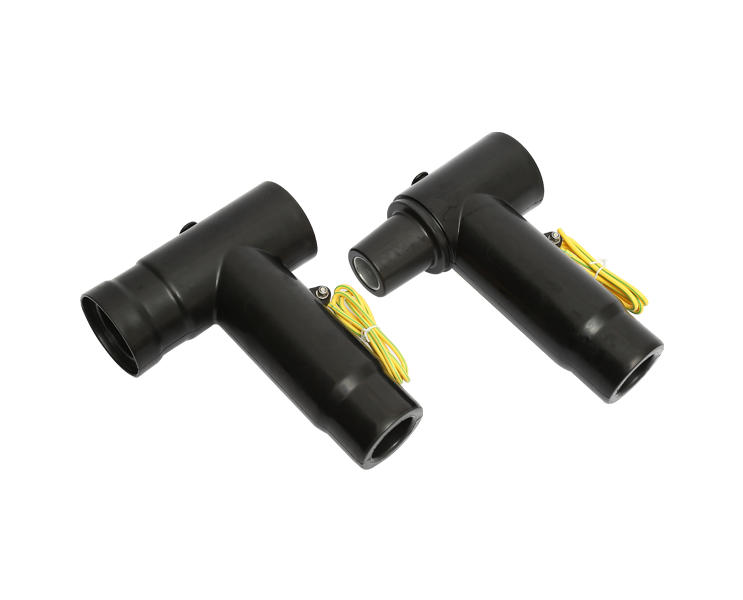| Product | 12/20kV 630A T-plug In Termiantion |
| Voltage | 12/20(24)kV |
| Type | Separable Connector |
| Cores | 1,3 |
| Cable Cross Section/mm² | 35 / 50 / 70 / 95 / 120 / 150 / 185 / 240 / 300 |


| Product | 12/20kV 630A T-plug In Termiantion |
| Voltage | 12/20(24)kV |
| Type | Separable Connector |
| Cores | 1,3 |
| Cable Cross Section/mm² | 35 / 50 / 70 / 95 / 120 / 150 / 185 / 240 / 300 |
The distinction between a 12/20(24)kV 630A screen separable connector and a screened separable connector lies in their specific designs and functionalities, both of which are critical components in medium voltage power distribution systems.
A 12/20(24)kV 630A screen separable connector refers to a connector designed for use with cables of voltage ratings 12kV and 20kV, with potential suitability for voltages up to 24kV. This type of connector is specifically equipped to provide a secure and screened connection between cables, ensuring efficient power transmission while effectively containing the electric field within the connector. It often incorporates features such as silicone rubber insulation and shielding to prevent electrical interference and enhance safety in medium voltage applications.
On the other hand, a screened separable connector is a broader term encompassing connectors designed with a focus on electromagnetic compatibility (EMC) and electrical shielding. These connectors are equipped with shielding layers or screens that minimize electromagnetic interference and reduce the risk of signal disruptions or noise propagation. Screened separable connectors are particularly valuable in environments where sensitive equipment or systems may be affected by electromagnetic emissions from power cables.
The choice between these connectors depends on the specific needs of the power distribution system. A 12/20(24)kV 630A screen separable connector is ideal when the primary concern is maintaining the integrity of the cable connection itself, ensuring efficient power transfer while containing electric fields. On the other hand, a screened separable connector is advantageous when electromagnetic compatibility is paramount, as it helps mitigate electromagnetic interference that could impact adjacent systems or equipment.
A 12/20kV 630A T-plug in termination is a specialized component designed to provide a reliable and efficient connection for medium voltage cables. This termination method offers several design features and advantages that contribute to the integrity and performance of medium voltage cable connections.
The T-plug in termination is characterized by its plug-and-play design, which allows for quick and secure installation. The termination comprises a male plug that fits into a corresponding socket or bushing, creating a robust connection without the need for complex assembly. This design minimizes the risk of installation errors and accelerates the process, reducing downtime during cable installations or repairs.
Advantages of the T-plug in termination include its compact size and versatility. Its streamlined design makes it suitable for applications with space constraints, such as compact substations or densely populated switchgear panels. Additionally, the T-plug in termination is often designed to provide excellent electrical insulation and environmental protection, ensuring reliable performance even in challenging conditions.
This termination method contributes to the overall reliability of medium voltage cable connections by eliminating the potential for mismatched connections or improper assembly. Its standardized design and ease of installation make it an efficient choice for various industries, including utilities, industrial facilities, and renewable energy installations.
When selecting between a 12/20(24)kV 630A screen separable connector and a 12/20kV 630A T-plug in termination for medium voltage power distribution networks, several critical factors should be evaluated to ensure optimal performance and integration within the system.
Voltage and Application: Consider the specific voltage requirements of the distribution network and the intended application. Screen separable connectors are tailored to ensure secure and screened cable connections, making them suitable for environments where electrical interference must be minimized. T-plug in terminations, with their plug-and-play design, are efficient choices for installations with space limitations and standardized connections.
Electromagnetic Compatibility: If electromagnetic compatibility is a concern, a screen separable connector's shielding properties may be preferable to mitigate electromagnetic interference. T-plug in terminations may offer simpler installation but might not provide the same level of shielding.
Installation Time and Expertise: Evaluate the available installation time and the skill level of the installers. T-plug in terminations are known for their quick and straightforward installation, making them suitable for scenarios with limited downtime or less experienced personnel. Screen separable connectors might require more time and expertise for proper assembly.
Space Constraints: Consider the available space for the termination. T-plug in terminations are designed to be compact and space-efficient, while screen separable connectors might have larger profiles due to their shielding components.
Environmental Conditions: Assess the environmental conditions in which the terminations will operate. Screen separable connectors often offer better environmental sealing and protection due to their design, which may be advantageous in harsh or outdoor environments.
The selection should align with the specific requirements and constraints of the medium voltage power distribution network. Carefully evaluating voltage needs, EMC considerations, installation factors, available space, and environmental conditions will lead to an informed decision that ensures optimal performance and reliability.
Coryright © 2018 Zhejiang Jiuneng Cable Accessories Co., Ltd Technical support:HWAQ Custom 12/20(24)kV 630A Screen Separable Connector